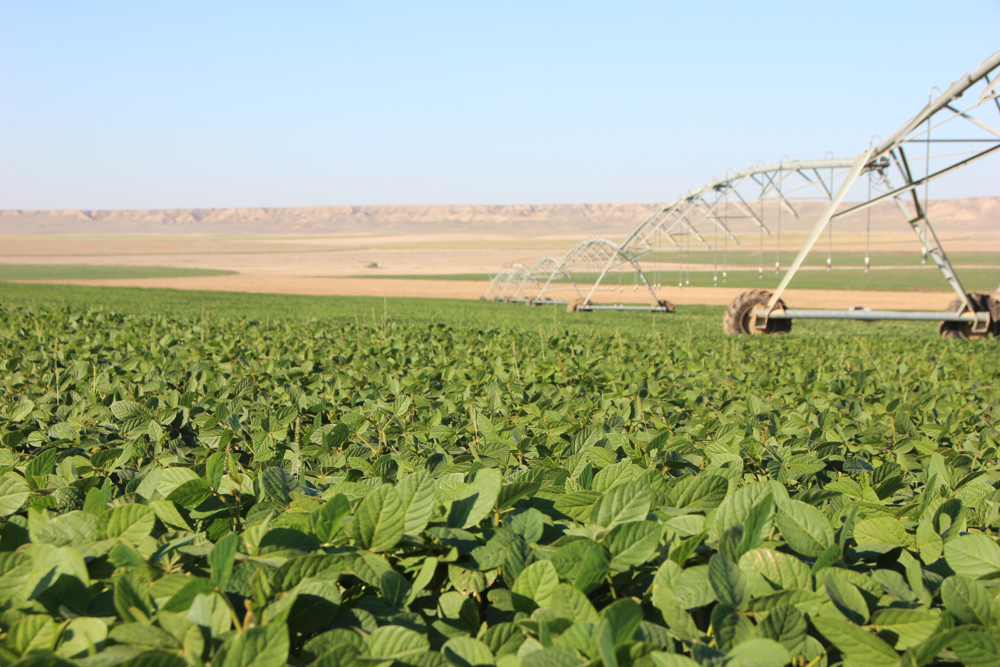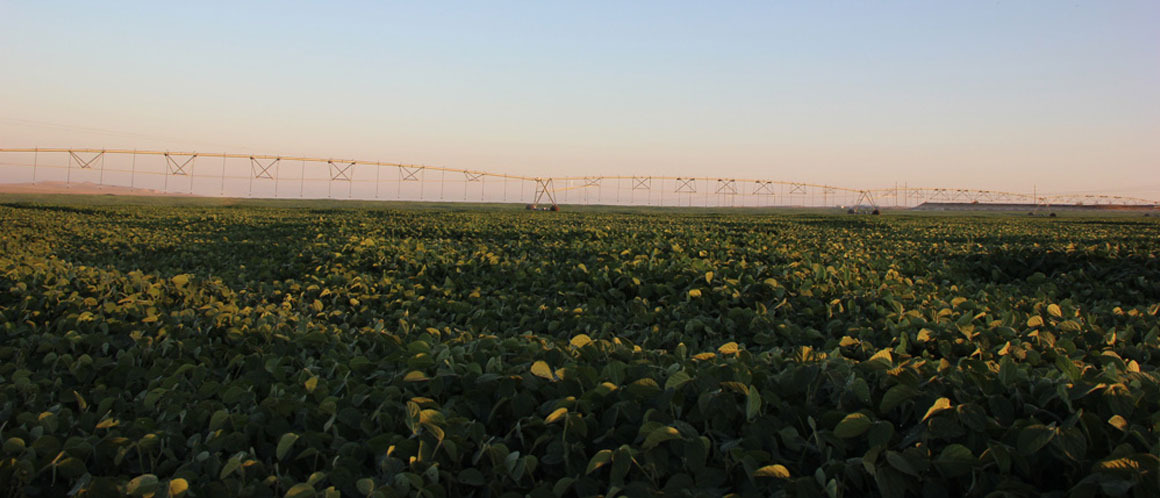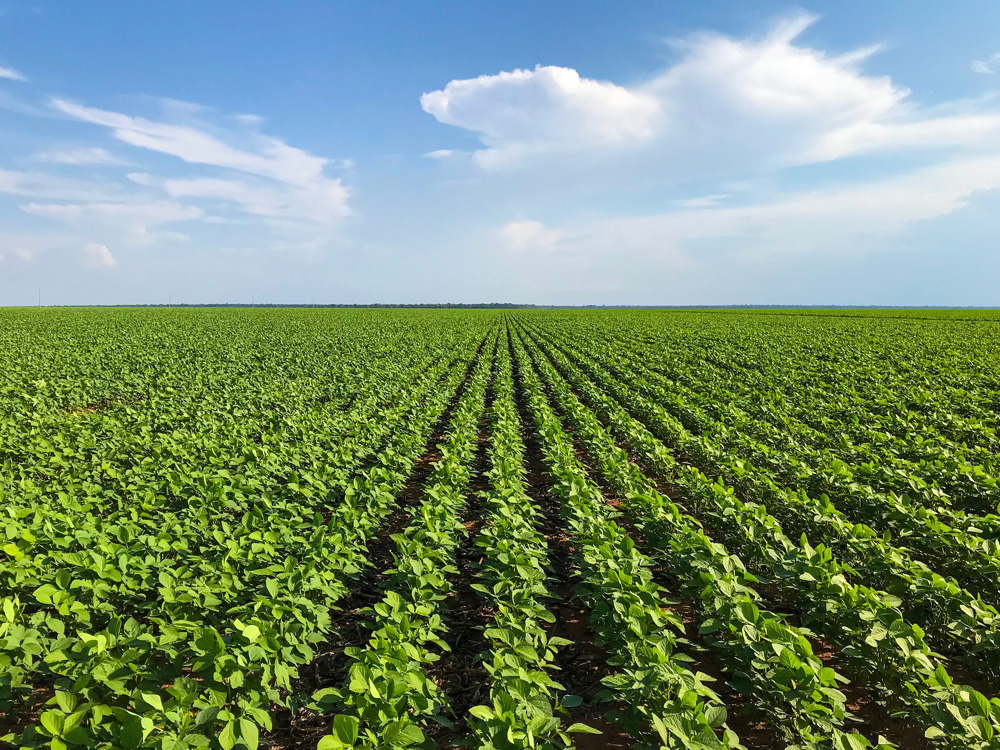
Soybeans are currently cultivated in more than 50 countries of the world. Because, as a strategic product, it occupies a place in the world stocks along with wheat and cotton.
 Share
Share The world's largest soybean exporters are the United States, Brazil and Argentina, and soybean crop fields continue to expand every year. Soybean green mass contains 217 grams of digestible protein per feed unit, 218 grams per feed bean, 201 grams in larvae and 175 grams per green pea. Soybean contains 223 grams of digestible protein per feed unit, 245 grams per lupin, 158 grams per green pea, 186 grams per adonis, 210 grams per tare and 211 grams per feed bean.The main reasons for further expansion of soybean crop fields are not only to minimize the dependence of domestic cattle breeding on foreign feed, but also the high export potential of the product. Despite the fact that Azerbaijan supplies 98% of the domestic market with poultry products, more than 85% of the feed supply of this field depends on foreign countries. Most of the feed products coming from foreign countries is soybeans, which means that sufficient exchange reserves are leaving the country. Although producers of poultry and dairy products feel the value of this product in the country more than farmers, agricultural farms are still not very interested in cultivation of this plant. As soybeans are valuable, they are useful to the soil. They can be planted with cereals and corn and enrich the soil with nitrogen. Since it provides natural nitrogen cycle of atmosphere in the soil, there is no special high demand for nitrogen fertilizers. It is not as demanding on water as corn and cotton. Azersheker LLC is already taking appropriate steps to strengthen feed production in Azerbaijan and reduce imports in this field. Thus, in 2019, test planting of soybeans was carried out on 38 ha field and the possibility of planting this plant as both primary and repeated plant in the conditions of irrigation in Azerbaijan was determined. Valuable experience has been gained in cultivation of soybeans. Already in 2020, works are carried out to expand the fields where this plant is planted. As the product is rich in protein, it is cultivated for food, feed and technical purposes.
 Its place in the crop rotationMainly well-watered chestnut, light chestnut, gray-brown soils, and etc. are suitable for soybean. In the crop rotation, soybeans can be cultivated after cereals, grain, corn and cotton plant. Soybean must not be planted after soybean, sunflower, annual cereals and legumes and perennial legumes. Soil preparationIf the forecrops are grain plants, the straw must be removed from the field as soon as the crop is harvested and the place of straw must be covered. The first covering is carried out with a coating technique at a depth of 6-8 cm, and if necessary, the second covering is carried out with heavy disc trowels at a depth of 10-12 cm. 10-15 days after covering, the field must be ploughed with plow at a depth of 28-30 cm. After corn, the field must be disked with a two-track heavy disc trowel and then the planting must be ploughed at a solid depth (25-27 cm). The soil must be worked with a complex cultivator prior to sowing in spring.SowingSoybean is a heat- and moisture-loving plant. It requires a high temperature of 18-25°C during flowering and ripening period. The seeds germinate at a temperature of 6-8°C. Soybean seedling tolerate spring frosts around 2-5°C. This plant requires the most water during the flowering and seeding phase. The transpiration coefficient is close to 600. The flowering phase can last 15-40 days, and in late-ripening varieties - up to 80 days. Soybean is a short-day plant. Soils other than saline soils are suitable for soybean. Soybean grows better in neutral reaction soils with pH = 6,5-7,0. R1 reproduction variety seeds must be taken for sowing. Before sowing, the seeds must be treated with azotobacter, bioprotector and fungicide. The seed can be treated by semi-dry method. Depending on the absolute mass, 50-90 kg (400-600 thousand pieces) of germinatable seeds must be sown per hectare. Soybean can be sown in a wide row dotted-line method with 45-60 cm distance between rows. Sowing is carried out when the temperature in the planting layer is 10-12°C. The seeds are sown in the fields provided with moisture or irrigation must be carried out immediately after sowing.
Its place in the crop rotationMainly well-watered chestnut, light chestnut, gray-brown soils, and etc. are suitable for soybean. In the crop rotation, soybeans can be cultivated after cereals, grain, corn and cotton plant. Soybean must not be planted after soybean, sunflower, annual cereals and legumes and perennial legumes. Soil preparationIf the forecrops are grain plants, the straw must be removed from the field as soon as the crop is harvested and the place of straw must be covered. The first covering is carried out with a coating technique at a depth of 6-8 cm, and if necessary, the second covering is carried out with heavy disc trowels at a depth of 10-12 cm. 10-15 days after covering, the field must be ploughed with plow at a depth of 28-30 cm. After corn, the field must be disked with a two-track heavy disc trowel and then the planting must be ploughed at a solid depth (25-27 cm). The soil must be worked with a complex cultivator prior to sowing in spring.SowingSoybean is a heat- and moisture-loving plant. It requires a high temperature of 18-25°C during flowering and ripening period. The seeds germinate at a temperature of 6-8°C. Soybean seedling tolerate spring frosts around 2-5°C. This plant requires the most water during the flowering and seeding phase. The transpiration coefficient is close to 600. The flowering phase can last 15-40 days, and in late-ripening varieties - up to 80 days. Soybean is a short-day plant. Soils other than saline soils are suitable for soybean. Soybean grows better in neutral reaction soils with pH = 6,5-7,0. R1 reproduction variety seeds must be taken for sowing. Before sowing, the seeds must be treated with azotobacter, bioprotector and fungicide. The seed can be treated by semi-dry method. Depending on the absolute mass, 50-90 kg (400-600 thousand pieces) of germinatable seeds must be sown per hectare. Soybean can be sown in a wide row dotted-line method with 45-60 cm distance between rows. Sowing is carried out when the temperature in the planting layer is 10-12°C. The seeds are sown in the fields provided with moisture or irrigation must be carried out immediately after sowing.

 Agrotechnical careSoybean is a plant sensitive to fertilization. Experiments showed that soybean absorbs 142 kg of N, 32 kg of P2O5, 35 kg of K2O to form a grain product of 20 sentners. It is expedient to apply 150 kg of ammophos fertilizer under the main plough. It is applied with up to 60 kg of urea sowing. As soybean accumulate nitrogen in the soil by fixing atmospheric nitrogen, it needs nitrogen fertilizer only during the initial germination and development phase of the seeds. Nitrogen feeding in the later stages has a negative effect on the development of azotobacter in the roots of the plant. At the same time, it is expedient to carry out out-of-root feeding with complex microfertilizers once during the vegetation period.Spraying the soil herbicide immediately after sowing for the purposes of first fight against weeds is considered an effective fight to control weeds in the early days. In the next stages, when weeds appear, herbicide spraying must be carried out. In small farms, cultivation can be done at a depth of 6-8 cm. However, the cultivator is not able to destroy all weeds. Insecticides are used to fight against schizotetranychus pruni and leaf-eating insects and fungicides are used to fight against diseases during the vegetation period.IrrigationSoybeans demand moisture the most during the stages of mass flowering, bean formation and grain filling. 4500-5000 m3/ha of water is required for normal growth of plant during the vegetation period. Crop harvestingSoy bean does not open when ripening, so there is less grain loss. When planted for grain purposes, 14-16% moisture must accumulate in the grain during the full ripening phase, when the leaves fall off, the stems dry out and the beans begin to turn yellow. The combine’s cutting equipment must be adjusted to mow from the bottom or flex headers with the ability to copy the relief are used for this purpose. In order to accelerate the ripening, desiccation is carried out in the fields where fast-growing varieties are planted. If the moisture content in the harvested seeds is more than 14%, the asphalt must be dried under the sun and cleaned of other impurities.
Agrotechnical careSoybean is a plant sensitive to fertilization. Experiments showed that soybean absorbs 142 kg of N, 32 kg of P2O5, 35 kg of K2O to form a grain product of 20 sentners. It is expedient to apply 150 kg of ammophos fertilizer under the main plough. It is applied with up to 60 kg of urea sowing. As soybean accumulate nitrogen in the soil by fixing atmospheric nitrogen, it needs nitrogen fertilizer only during the initial germination and development phase of the seeds. Nitrogen feeding in the later stages has a negative effect on the development of azotobacter in the roots of the plant. At the same time, it is expedient to carry out out-of-root feeding with complex microfertilizers once during the vegetation period.Spraying the soil herbicide immediately after sowing for the purposes of first fight against weeds is considered an effective fight to control weeds in the early days. In the next stages, when weeds appear, herbicide spraying must be carried out. In small farms, cultivation can be done at a depth of 6-8 cm. However, the cultivator is not able to destroy all weeds. Insecticides are used to fight against schizotetranychus pruni and leaf-eating insects and fungicides are used to fight against diseases during the vegetation period.IrrigationSoybeans demand moisture the most during the stages of mass flowering, bean formation and grain filling. 4500-5000 m3/ha of water is required for normal growth of plant during the vegetation period. Crop harvestingSoy bean does not open when ripening, so there is less grain loss. When planted for grain purposes, 14-16% moisture must accumulate in the grain during the full ripening phase, when the leaves fall off, the stems dry out and the beans begin to turn yellow. The combine’s cutting equipment must be adjusted to mow from the bottom or flex headers with the ability to copy the relief are used for this purpose. In order to accelerate the ripening, desiccation is carried out in the fields where fast-growing varieties are planted. If the moisture content in the harvested seeds is more than 14%, the asphalt must be dried under the sun and cleaned of other impurities.